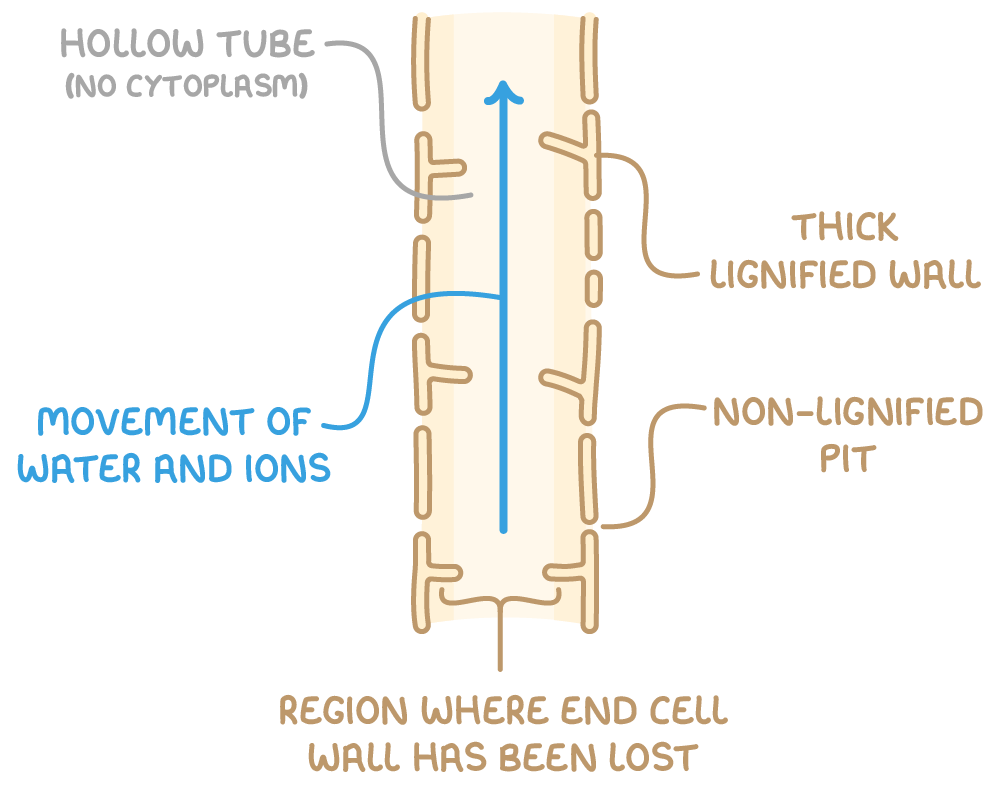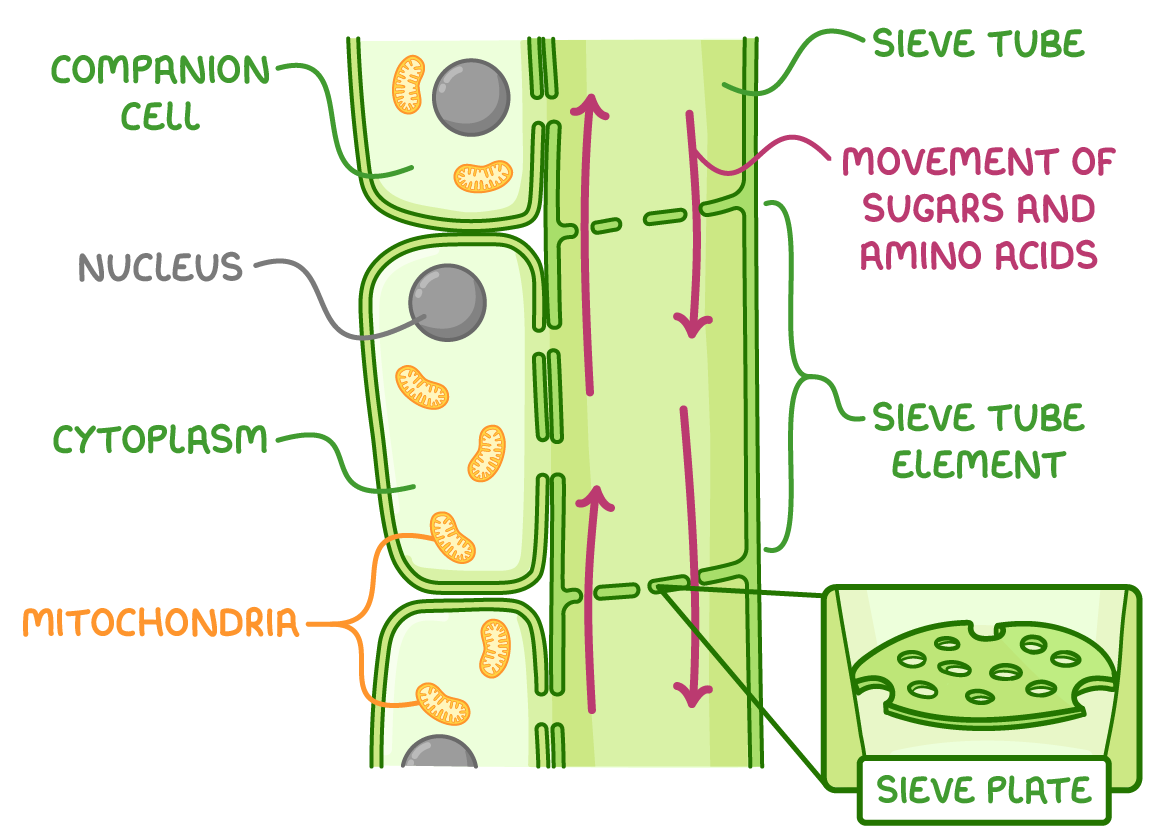Xylem & Phloem
This lesson covers:
- Why plants need transport systems
- Functions and adaptations of xylem tissue
- Functions and adaptations of phloem tissue
Why do plants need transport systems?
Just like animals, plants require transport systems.
Plants need transport systems because:
- They are multicellular with a low surface area to volume ratio.
- Diffusion is too slow to meet their metabolic needs.
- Substances must be moved over long distances.
To achieve this, plants have two main transport tissues: xylem and phloem. These tissues are located throughout the plant, connected in a vascular system.
Adaptations of xylem tissue
Xylem tissue transports water and mineral ions around plants. It also provides structural support. It is mostly made up of xylem vessels.
A cross section through part of a xylem vessel is represented below.

Adaptations of xylem vessels:
- They are elongated, hollow tubes without end walls.
- They lack organelles.
- Their walls are thickened with lignin for support.
- They have non-lignified pits that allow movement of water and ions into and out of vessels.
Adaptations of phloem tissue
Phloem tissue transports sugars and amino acids (assimilates) around plants. It is mostly made up of sieve tube elements and companion cells.
A cross section through a section of phloem tissue is represented below.

Adaptations of sieve tube elements:
- They are connected end-to-end to form sieve tubes.
- They have sieve plates with pores at their ends to allow flow of sugars and amino acids.
- They lack nuclei and most organelles.
- They have only a thin layer of cytoplasm.
Adaptations of companion cells:
- They are connected to sieve tube elements through pores (plasmodesmata).
- The cytoplasm contains a large nucleus, many mitochondria to release energy for the active transport of substances through the sieve tube elements, and many ribosomes for protein synthesis.